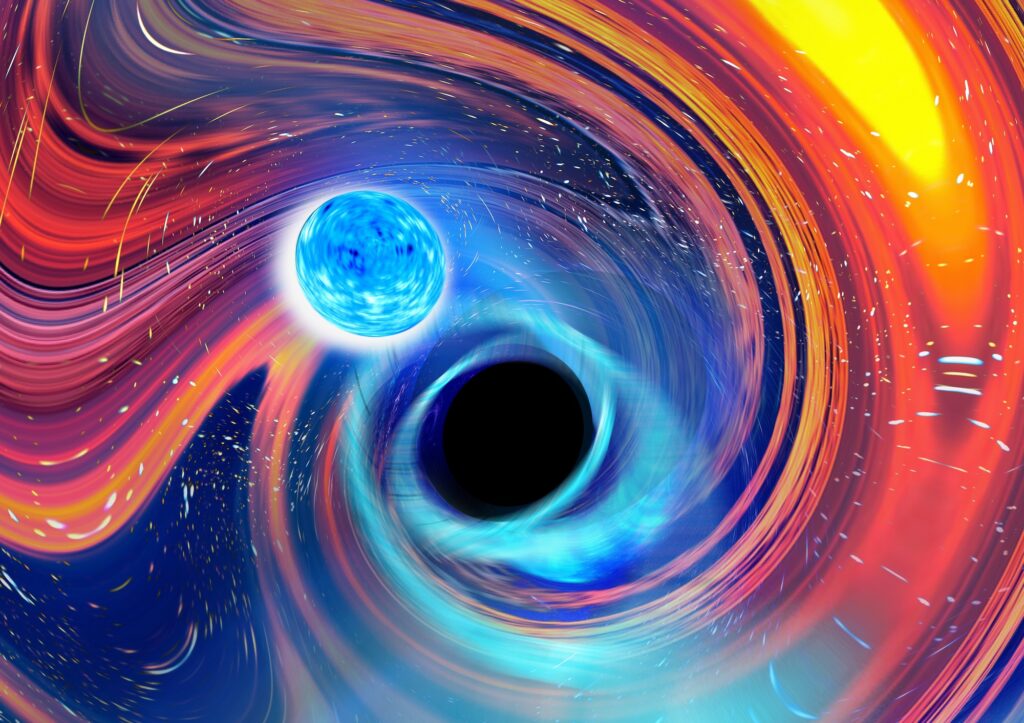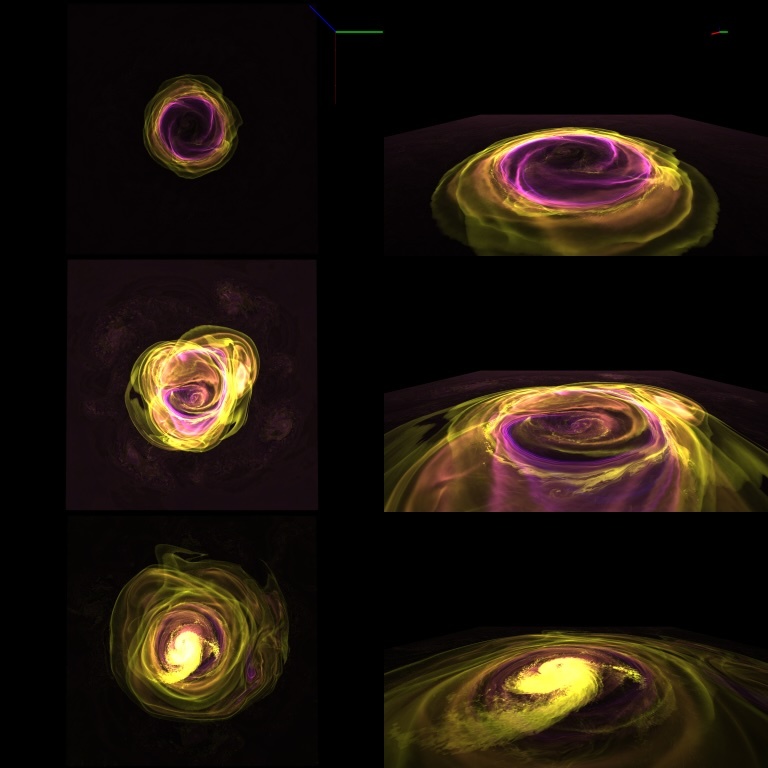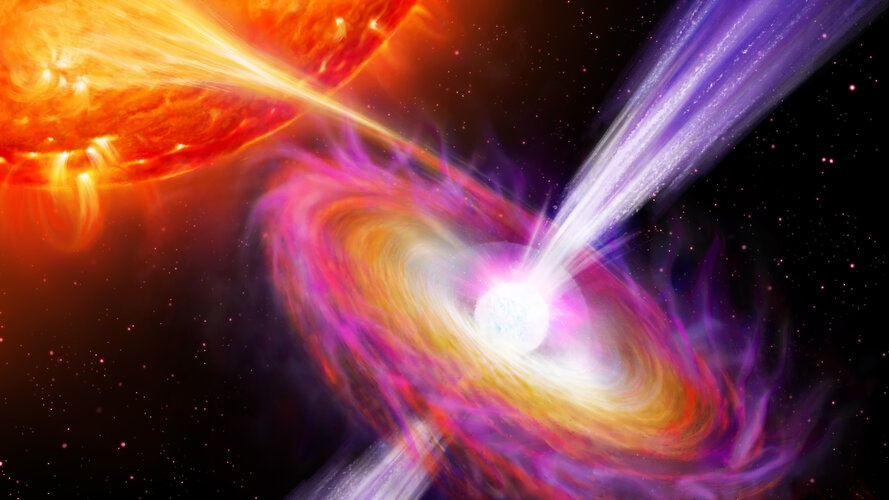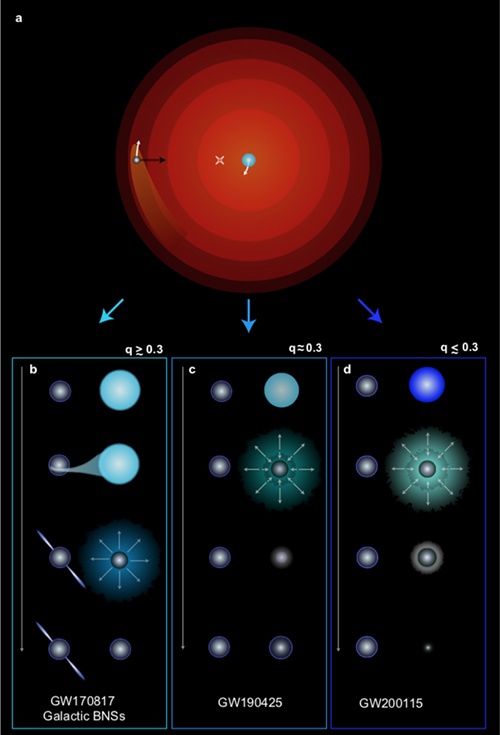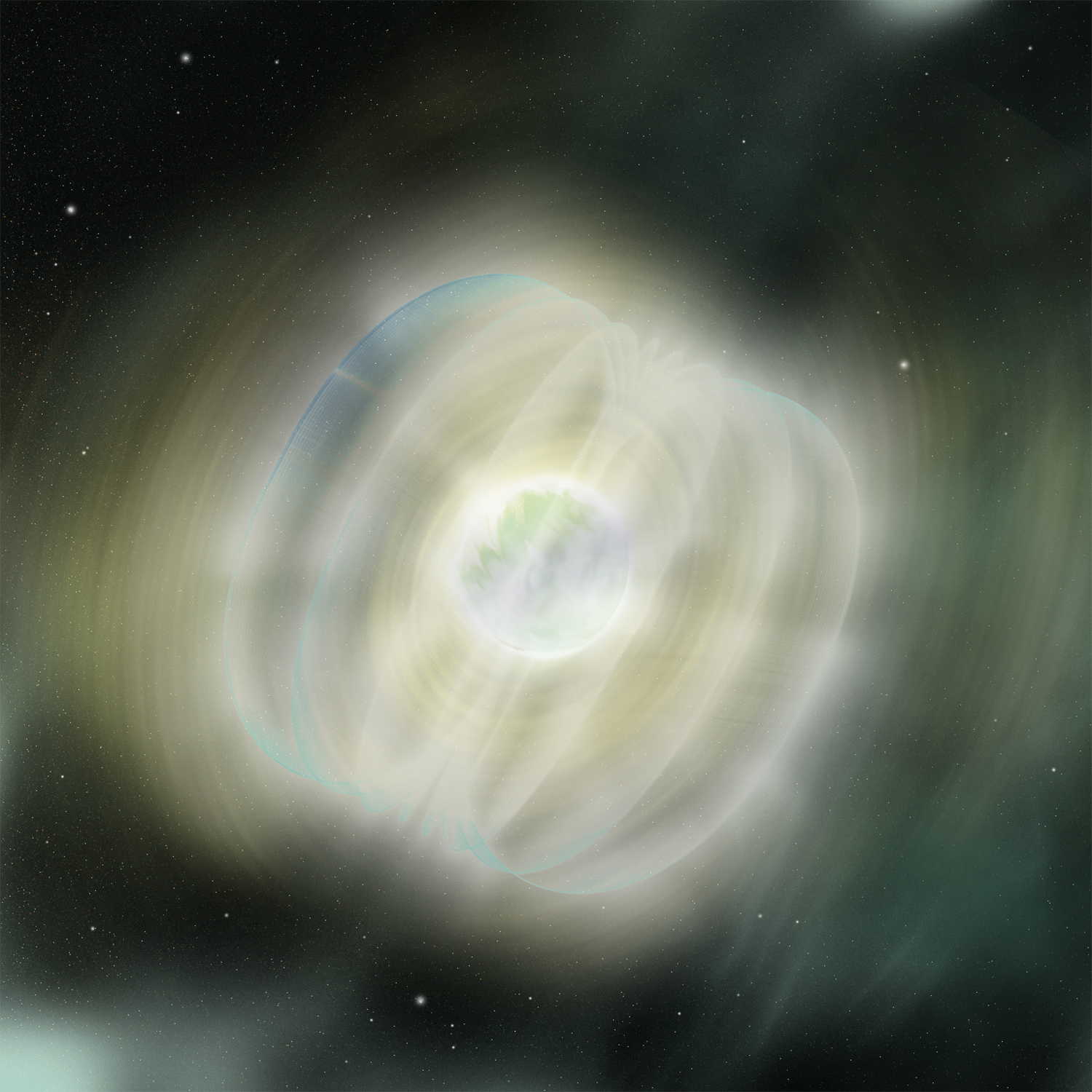Galactic collisions, meteor impacts and even stellar mergers are not uncommon events. neutron stars colliding with black holes however are a little more rare, in fact, until now, we have never observed one. The fourth LIGO-Virgo-KAGRA observing detected gravitational waves from a collision between a black hole and neutron star 650 million light years away. The black hole was tiny though with a mass between 2.5 to 4.5 times that of the Sun.
Continue reading “A Neutron Star Merged with a Surprisingly Light Black Hole”It Takes a Supercomputer to Properly Simulate a Neutron Star’s Surface
Neutron stars, the remains of massive stars that have imploded and gone supernova at the end of their life, can still create massive flares. These incredible bursts of energy release X-rays that propagate through space. It is a complex process to simulate but astronomers have turned to a supercomputer to help. Modelling the twisting magnetic fields, the interaction with gas and dust, the surface of flaring neutron stars has been revealed in incredible 3D.
Continue reading “It Takes a Supercomputer to Properly Simulate a Neutron Star’s Surface”Neutron Stars are Jetting Material Away at 40% the Speed of Light
It’s a well known fact that black holes absorb anything that falls into them. Often before material ‘vanishes’ inside it forms into an accretion disk around them. Like the progenitor stars, the black holes have powerful magnetic fields and these can generate jets that blast away from the black hole. A similar process occurs in neutron stars that are orbiting other stars and recent observations holes have shown that some material in the jets travel at speeds 35-40% the speed of light.
Continue reading “Neutron Stars are Jetting Material Away at 40% the Speed of Light”This Supernova Lit Up the Sky in 1181. Here’s What it Looks Like Now
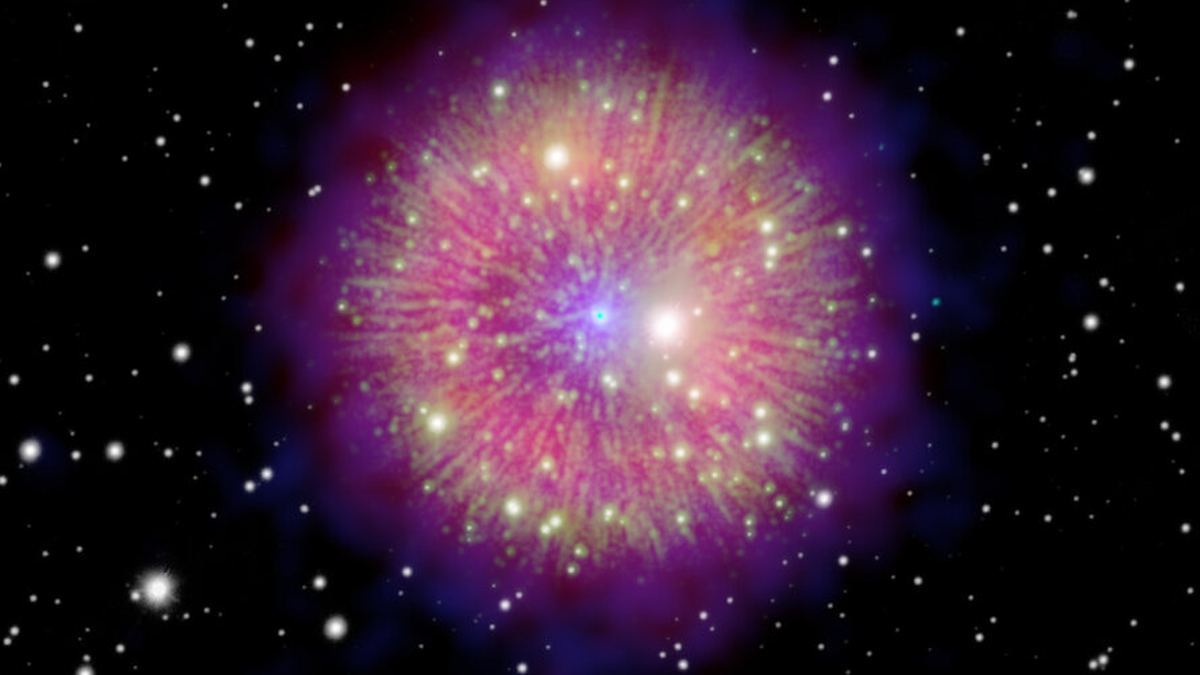
Historical astronomical records from China and Japan recorded a supernova explosion in the year 1181. It was in the constellation Cassiopeia and it shone as bright as the star Vega for 185 days. Modern astronomers took their cue from their long-gone counterparts and have been searching for its remnant.
But it took them time to find it because they were looking for the wrong thing.
Continue reading “This Supernova Lit Up the Sky in 1181. Here’s What it Looks Like Now”Simulation Perfectly Matches What We See When Neutron Stars Collide
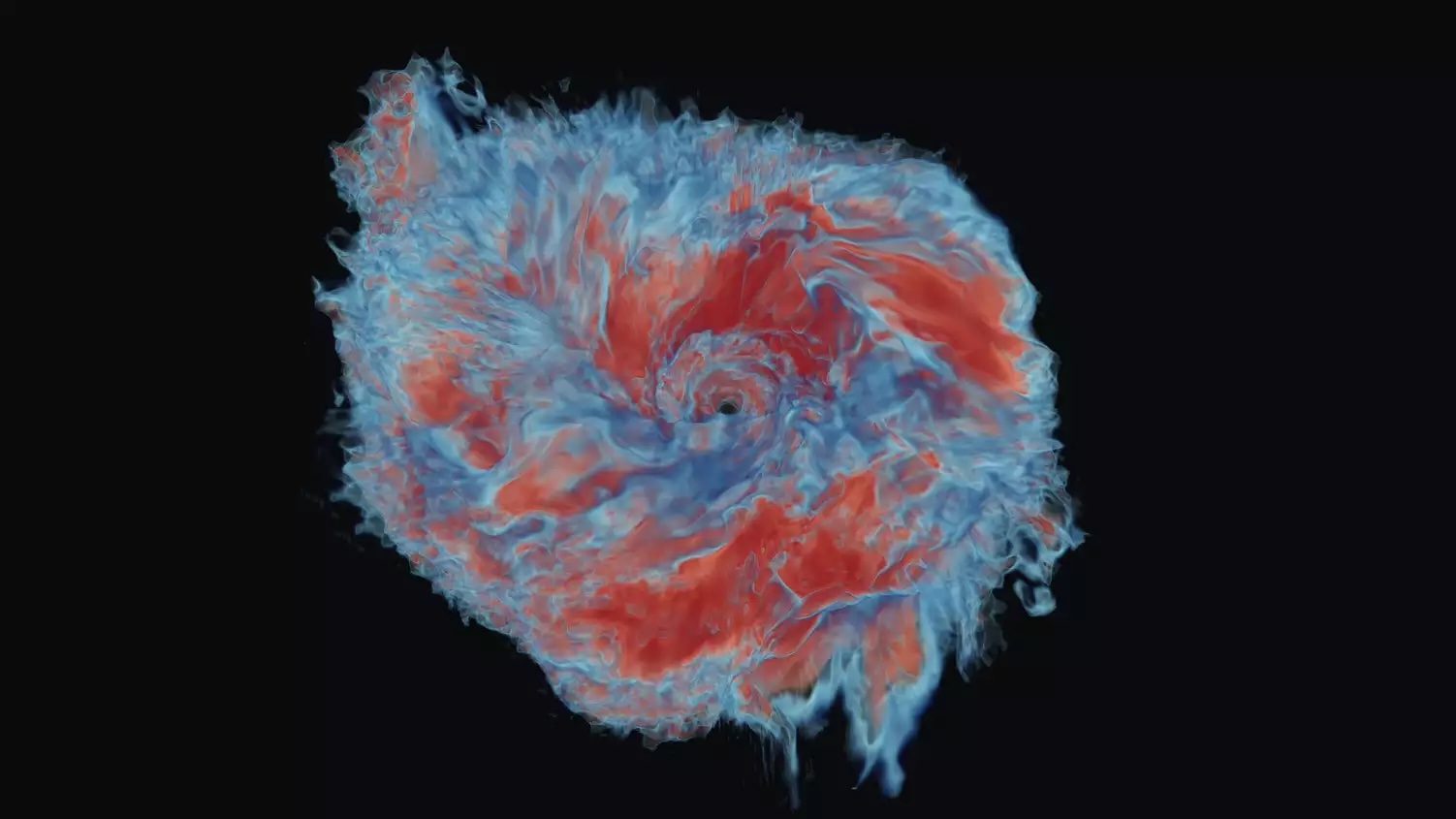
There are many mysteries in the world of astronomy and a fair number relate to the processes during the end of the life of a super massive star. Throw in the complexity of collisions and you have a real head scratching problem on your hands. In 2017 colliding neutron stars were detected and the data has allowed a new simulation to be tested with predictions beautifully matching observation.
Continue reading “Simulation Perfectly Matches What We See When Neutron Stars Collide”Spider Pulsars are Tearing Apart Stars in the Omega Cluster
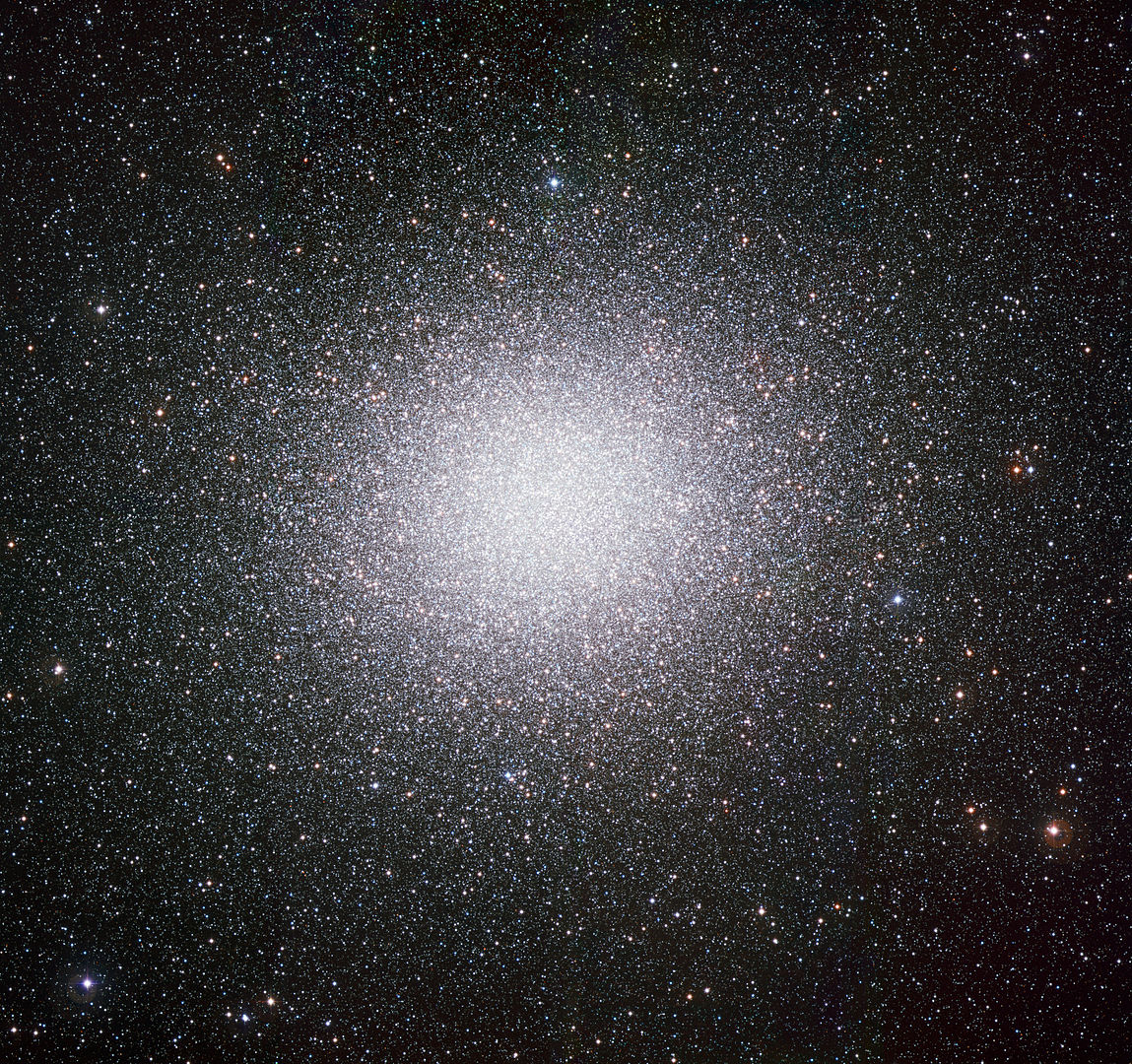
Pulsars are extreme objects. They’re what’s left over when a massive star collapses on itself and explodes as a supernova. This creates a neutron star. Neutron stars spin, and some of them emit radiation. When they emit radiation from their poles that we can see, we call them pulsars.
Continue reading “Spider Pulsars are Tearing Apart Stars in the Omega Cluster”Gravitational Waves Reveal Surprising Secrets About Neutron Stars
The confirmation of gravitational waves back in 2017 continues to unlock whole new worlds of physics but also continues to elicit further questions. The detection of each gravitational wave brings a new challenge – how to find out what caused the event. Sometimes that is harder than it sounds. Now a team led by Alejandro Vigna-Gomez of the University of Copenhagen thinks they found a model of star death that helps to explain some previously inexplicable findings – and points to a galaxy with many more massive neutron stars than previously thought.
Continue reading “Gravitational Waves Reveal Surprising Secrets About Neutron Stars”A Black Hole or Neutron Star Fell Into Another Star and Triggered a Supernova
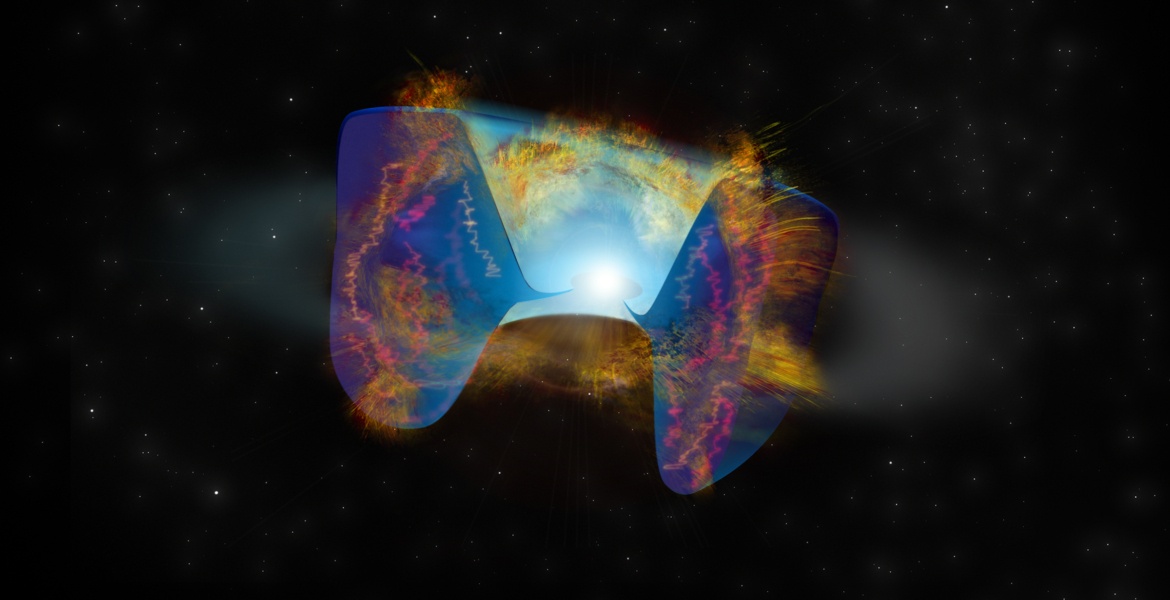
What happens when you slam a neutron star (or black hole, take your pick) into a companion star? A supernova, that’s what. And for the first time ever, astronomers think they’ve spotted one.
Continue reading “A Black Hole or Neutron Star Fell Into Another Star and Triggered a Supernova”Astronomy Jargon 101: Magnetars
In this series we are exploring the weird and wonderful world of astronomy jargon! Hang on to your magnetic hats, because today’s topic is magnetars!
Continue reading “Astronomy Jargon 101: Magnetars”Astronomers Think They’ve Found the Neutron Star Remnant Left Behind from Supernova 1987A
It was the brightest supernova in nearly 400 years when it lit the skies of the southern hemisphere in February 1987. Supernova 1987A – the explosion of a blue supergiant star in the nearby mini-galaxy known as the Large Magellanic Cloud – amazed the astronomical community. It offered them an unprecedented opportunity to observe an exploding star in real-time with modern instruments and telescopes. But something was missing. After the supernova faded, astronomers expected to find a neutron star (a hyper-dense, collapsed stellar core, made largely of neutrons) left-over at the heart of the explosion. They saw nothing.
Continue reading “Astronomers Think They’ve Found the Neutron Star Remnant Left Behind from Supernova 1987A”
